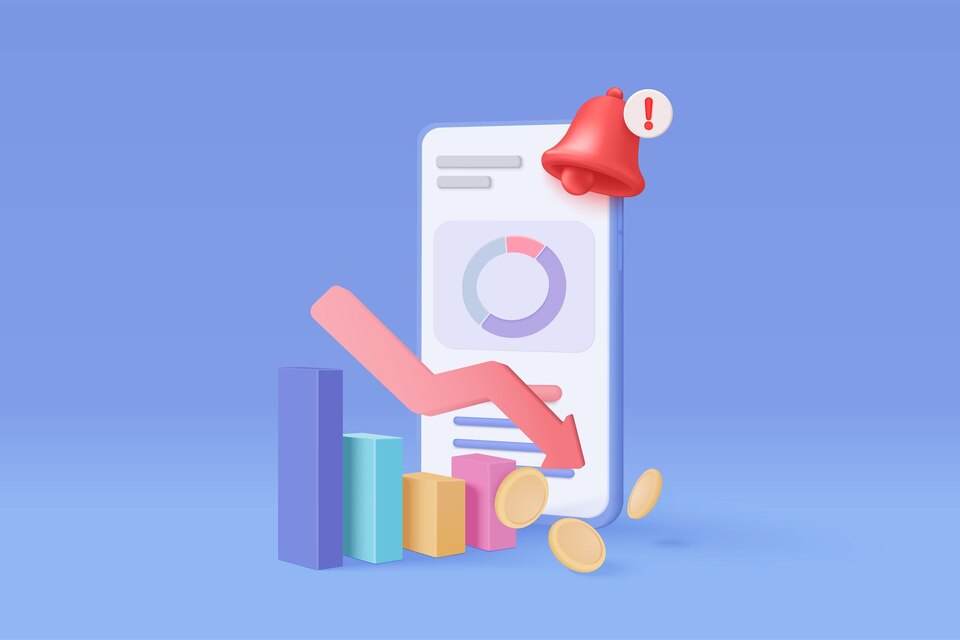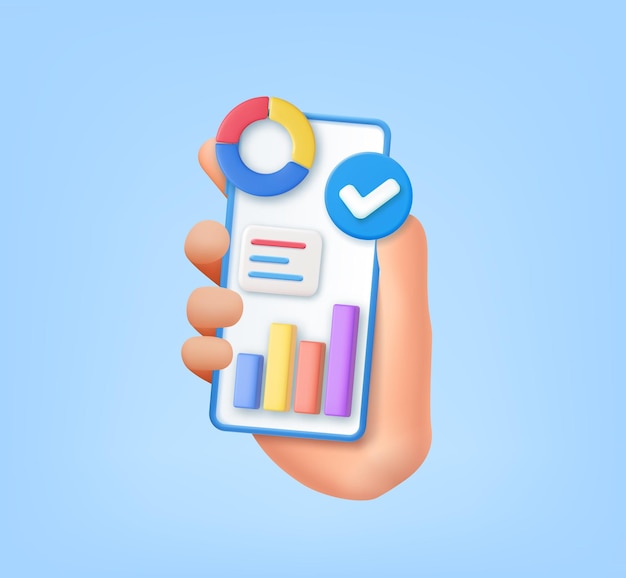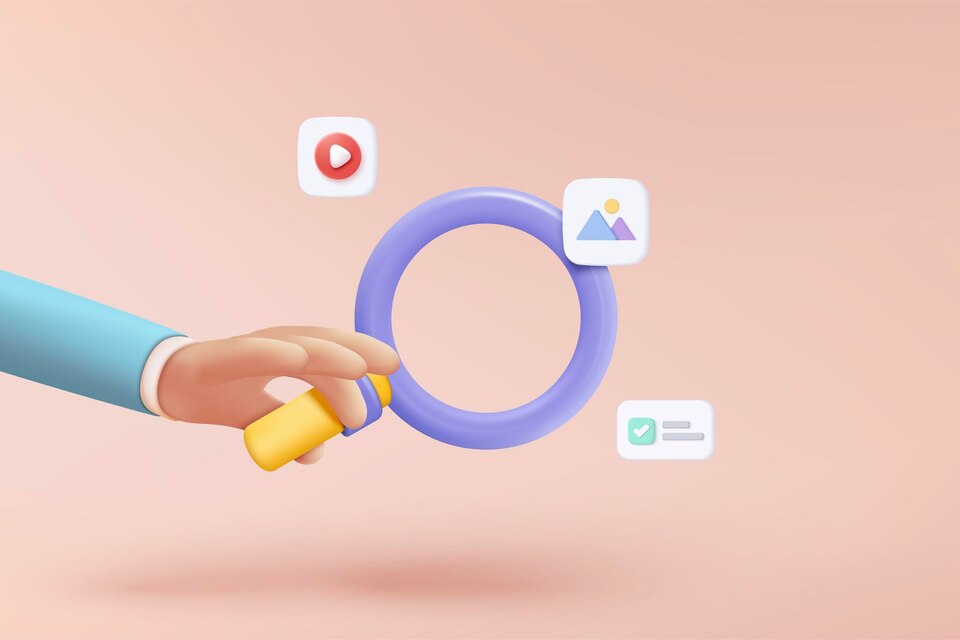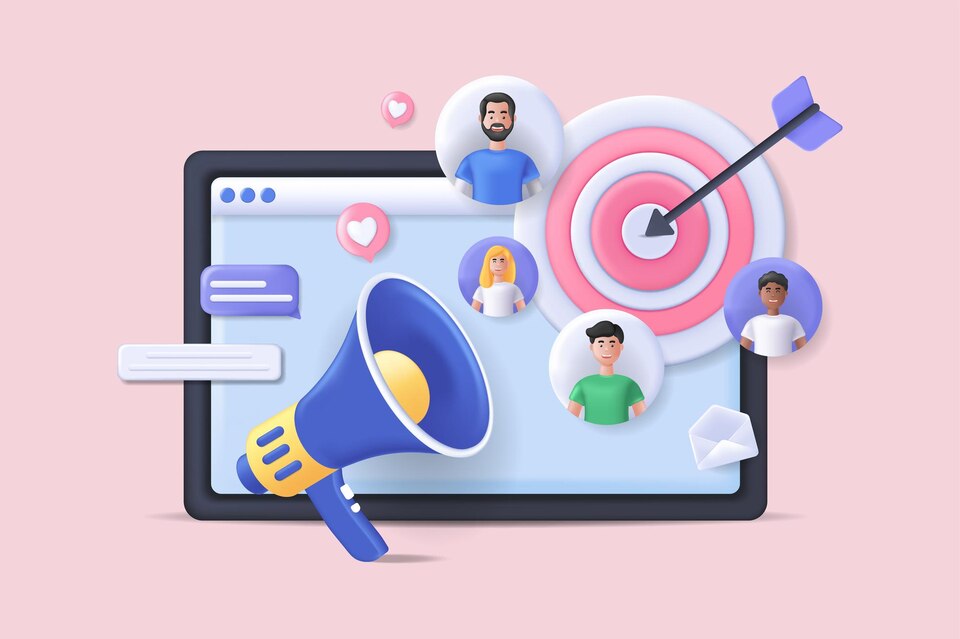Welcome to the world of social media SEO, where the power of social media meets the effectiveness of search engine optimization. In today’s digital landscape, having a strong online presence is crucial for any business or brand. With millions of users active on social media platforms every day, tapping into this vast audience can generate substantial traffic for your website.
By optimizing your social media profiles and content, you can attract targeted visitors who are actively searching for products or services like yours. Social media SEO allows you to enhance your website’s visibility and drive organic growth by leveraging the influence of popular social platforms such as Facebook, Twitter, Instagram, and LinkedIn.
With the right strategies in place, you can harness the potential of social media to boost your website’s rankings in search engine results pages (SERPs). This means that when people search for relevant keywords on search engines like Google, your website will appear higher in the rankings, increasing your chances of attracting qualified leads and potential customers.
Whether you’re a small business owner, a marketer, or an entrepreneur, incorporating social media SEO into your digital marketing strategy is a game-changer. It is a cost-effective way to generate more traffic, improve brand visibility, and ultimately, drive conversions.
In this article, we will explore the fundamentals of social media SEO and provide you with actionable insights to help you optimize your social media presence, attract targeted traffic, and achieve SEO success. So let’s dive in and unlock the potential of social media to generate more traffic for your website!
Table of Contents
Understanding Social Media SEO
Social media optimization plays a crucial role in improving your website’s visibility and driving organic traffic. By optimizing your social media profiles and content, you can enhance your online presence and effectively engage with your target audience.
Optimizing Your Social Media Profiles
When it comes to social media optimization, your profiles are your virtual first impression. It’s essential to ensure that your social media profiles are fully optimized with relevant keywords, compelling descriptions, and eye-catching visuals. By aligning your profiles with your brand identity and utilizing SEO best practices, you can attract more visitors and increase your online visibility.
Crafting Compelling Content
Creating high-quality and shareable content is a key aspect of social media optimization. By posting engaging content that resonates with your audience, you can encourage likes, shares, and interactions, which in turn can boost your visibility on social media platforms. Whether it’s informative blog articles, captivating images, or entertaining videos, your content should be optimized for social media to drive engagement and attract new followers.
Building a Strong Network
Building a strong network of followers and influencers can significantly enhance your social media optimization efforts. By connecting and engaging with influencers in your industry, you can expand your reach and tap into their established audience. Additionally, actively engaging with your followers by responding to comments, messages, and mentions can help foster relationships and increase brand visibility.
Analyzing Metrics for Optimization
Regularly analyzing social media metrics is an integral part of social media optimization. By monitoring key metrics such as engagement, reach, and conversions, you can gain valuable insights into the effectiveness of your social media strategies. These insights can help you refine your approach, identify areas for improvement, and make data-driven decisions to optimize your social media presence.
| Metrics | Purpose |
|---|---|
| Engagement Rate | Measure the level of audience interaction with your content, indicating the effectiveness of your social media optimization efforts. |
| Reach | Evaluate the number of people who see your social media content, providing insights into the visibility of your brand. |
| Conversions | Track the number of users who take the desired action, such as making a purchase or signing up for a newsletter, demonstrating the impact of your social media optimization. |
By understanding the fundamentals of social media optimization and implementing effective strategies, you can maximize your website’s visibility, attract targeted traffic, and ultimately drive business growth.
Incorporating SEO into Your Social Media Marketing

When it comes to social media marketing, incorporating SEO strategies into your campaigns can have a profound impact on your online presence and organic growth. By leveraging the power of SEO for social media, you can enhance the visibility of your brand, attract targeted traffic, and ultimately drive more conversions to your website.
Integrating Keywords
One of the key ways to incorporate SEO into your social media marketing is through the strategic use of keywords. By identifying and targeting relevant keywords in your social media posts, profiles, and hashtags, you can increase the discoverability of your content. This allows your brand to be found by users searching for specific topics or products related to your business.
Optimizing Social Media Profiles
Another effective technique is to optimize your social media profiles for search engines. This involves using keywords in your profile name, bio, and descriptions to improve your visibility in search results. Additionally, adding links to your website and relevant keywords in your social media handles can further boost your SEO efforts.
Creating High-Quality Content
Content is king, both in SEO and social media marketing. By creating high-quality, engaging content that aligns with your target audience’s interests and needs, you can attract more followers and increase your brand’s visibility. Incorporate relevant keywords naturally into your posts, captions, and headlines to optimize your content for search engines.
Encouraging Social Sharing
Social sharing plays a crucial role in SEO for social media. The more people share your content, the more visibility it gains, leading to increased organic traffic. Encourage your followers to share your posts by including social sharing buttons and calls to action. This can help amplify your brand’s reach and generate valuable backlinks to your website, which are important for SEO.
Tracking Analytics and Making Adjustments
Lastly, it’s essential to track social media analytics to measure the effectiveness of your SEO strategies. By monitoring metrics such as engagement, reach, and conversion rates, you can gain valuable insights into what is working and what needs improvement. Use these insights to make data-driven adjustments and optimize your social media marketing efforts for better SEO success.
Incorporating SEO into your social media marketing can be a game-changer for your brand’s online visibility and growth. By strategically integrating SEO strategies, optimizing your profiles, creating high-quality content, encouraging social sharing, and tracking analytics, you can maximize the impact of your social media campaigns and drive organic growth.
Harnessing the Power of Organic Social Media Growth
Organic social media growth is a vital component of your SEO strategy. By building a loyal and engaged community on social media platforms, you can establish your brand authority and improve your search rankings. Let’s explore the significance of organic social media growth and how you can leverage it to enhance your online presence.
When your social media audience grows organically, it means that people are genuinely interested in your content and actively engage with your brand. This type of growth is valuable because it leads to higher user engagement, increased brand visibility, and improved search engine rankings.
To harness the power of organic social media growth, it’s important to focus on creating high-quality, relevant content that resonates with your target audience. By understanding your audience’s needs and preferences, you can tailor your social media posts to provide value and attract more followers.
A key aspect of organic growth is building meaningful connections with your followers. Engage with your audience by responding to comments, asking for their opinions, and encouraging them to share your content. This interaction not only strengthens your relationship with your audience but also increases the likelihood of them sharing your content with their networks, thereby expanding your reach.
Additionally, utilizing relevant hashtags and keywords in your social media posts can help improve your search engine visibility. When users search for specific topics or keywords related to your industry, your optimized posts have a higher chance of appearing in the search results.
Moreover, collaborating with influencers and industry leaders can significantly boost your organic social media growth. Influencers have dedicated followers who trust their recommendations, so partnering with them can expose your brand to a wider audience and attract new followers who are genuinely interested in your offerings.
Addressing the importance of organic social media growth in your SEO strategy is crucial for long-term success. By building an engaged community, creating valuable content, and collaborating with influencers, you can optimize your social media presence and experience the benefits of improved brand authority and higher search rankings.
Analyzing Social Media Metrics for SEO Success

In the world of digital marketing, social media analytics play a crucial role in measuring the success of your SEO efforts. By analyzing key metrics, you can gain valuable insights into the effectiveness of your social media SEO strategies and make data-driven decisions to drive your website’s visibility and organic growth.
When it comes to social media analytics, several metrics are worth tracking to assess the impact of your SEO endeavors. These metrics include:
- Reach and Impressions: Tracking the number of people who have seen your social media content and the total number of times it has been viewed can provide valuable insights into your brand’s visibility.
- Engagement: Measuring the level of audience interaction with your social media posts, such as likes, comments, and shares, can help you determine the effectiveness of your content in generating interest and driving engagement.
- Click-through Rate (CTR): Calculating the percentage of users who click on a link in your social media posts can indicate how compelling your content is and its impact on driving traffic to your website.
- Conversion Rate: By monitoring the number of users who complete a desired action, such as making a purchase or filling out a form, you can evaluate the success of your social media SEO strategies in driving conversions.
Creating a comprehensive social media analytics report can be greatly beneficial in evaluating the overall performance of your SEO efforts and identifying areas for improvement. By analyzing these metrics, you can refine your social media strategies, optimize your content, and achieve greater SEO success.
| Metric | Description |
|---|---|
| Reach and Impressions | The number of people who have seen your social media content and the total number of times it has been viewed. |
| Engagement | Level of audience interaction with your social media posts, such as likes, comments, and shares. |
| Click-through Rate (CTR) | Percentage of users who click on a link in your social media posts. |
| Conversion Rate | Number of users who complete a desired action, such as making a purchase or filling out a form. |
Leveraging Social Media Advertising for SEO Benefits
Social media advertising plays a crucial role in enhancing your SEO efforts and driving targeted traffic to your website. By strategically utilizing paid advertising on platforms such as Facebook, Instagram, and Twitter, you can not only increase your brand visibility but also improve your overall SEO performance. Here are some key benefits of leveraging social media advertising for SEO:
1. Enhanced Reach and Targeting
With social media advertising, you can reach a vast and diverse audience. By targeting specific demographics, interests, and behaviors, you can ensure that your ads are seen by the right people at the right time. This targeted approach not only helps drive more qualified traffic to your website but also improves your SEO rankings by increasing user engagement and reducing bounce rates.
2. Increased Brand Visibility and Recognition
Social media advertising allows you to increase your brand visibility and recognition among your target audience. By consistently delivering relevant and valuable content through targeted ads, you can strengthen your brand presence and build trust with potential customers. This increased brand visibility translates into higher organic search rankings, as search engines recognize your brand’s authority and relevance.
3. Improved Link Building and Social Signals
Social media advertising can also have a positive impact on your link-building efforts. By promoting your content through paid ads, you can increase the chances of other websites linking back to your site. These external links not only enhance your website’s authority but also contribute to the social signals that search engines consider when ranking your site. Social media ads help generate buzz and encourage shares, likes, and comments, signaling to search engines that your content is valuable and worthy of higher rankings.
4. Targeted Keyword Research
Running social media advertising campaigns provides you with valuable insights into keywords that resonate with your target audience. By monitoring ad performance and analyzing the search behavior of users who click on your ads, you can identify new keyword opportunities to optimize your website’s content. This targeted keyword research further strengthens your overall SEO strategy and helps you rank higher in relevant search results.
5. Data-Driven Optimization
Social media advertising provides detailed analytics and data on the performance of your ads, audience engagement, and conversions. By analyzing this data, you can make informed decisions and continuously optimize your campaigns for better results. This data-driven approach not only improves your ad performance but also informs your overall SEO strategy, leading to long-term success.
By leveraging social media advertising to complement your SEO efforts, you can amplify your online presence, increase website traffic, and ultimately achieve higher rankings in search engine results. Remember to align your ad content and targeting strategies with your SEO goals, and consistently monitor and optimize your campaigns for maximum impact.
| Social Media Advertising Benefits for SEO | |
|---|---|
| Enhanced Reach and Targeting | Increased Brand Visibility and Recognition |
| Improved Link-building and Social Signals | Targeted Keyword Research |
| Data-Driven Optimization |
Crafting Effective Social Media Strategies for SEO

In this section, we will provide valuable tips and insights on developing effective social media strategies that align with your SEO goals. Crafting a well-thought-out social media strategy is crucial for enhancing your website’s visibility and driving organic traffic. By implementing proven techniques for content planning, audience targeting, and engagement, you can maximize the impact of your social media efforts and achieve SEO success.
Content Planning
A solid content plan is the foundation for a successful social media strategy. By creating relevant and engaging content, you can attract and retain your target audience while establishing your authority in your industry.
- Research your audience: Identify your target demographic and understand their preferences, interests, and pain points. This knowledge will guide your content creation process and help you tailor your messaging to resonate with your audience.
- Create a content calendar: Plan and schedule your social media posts in advance to ensure consistent and timely content delivery. This will help you stay organized and maintain a regular posting cadence.
- Include a mix of content types: Diversify your content by incorporating a variety of formats such as blog posts, videos, infographics, and case studies. This will cater to different audience preferences and keep your social media feed engaging.
Audience Targeting
Effectively targeting your audience ensures that your social media efforts reach the right people, increasing the chances of driving relevant traffic to your website.
- Define your target audience: Use market research and customer data to identify key demographics, interests, and behaviors that align with your products or services.
- Segment your audience: Group your target audience based on specific characteristics or behaviors. This allows you to tailor your messaging to each segment, providing a more personalized and relevant experience.
- Utilize audience targeting tools: Social media platforms offer advanced targeting features that allow you to reach specific subsets of your target audience. Take advantage of these tools to refine your audience targeting and maximize the impact of your social media campaigns.
Engagement Strategies
Engaging with your audience is essential for building meaningful relationships and fostering brand loyalty. By prioritizing engagement, you can create a vibrant online community that drives organic traffic to your website.
- Respond to comments and messages: Promptly reply to comments, direct messages, and mentions to show that you value your audience’s feedback and are actively listening to their needs.
- Create interactive content: Encourage audience participation by creating polls, quizzes, contests, and interactive posts. This not only boosts engagement but also provides valuable insights into your audience’s preferences and interests.
- Cultivate partnerships and collaborations: Collaborate with influencers, complementary brands, or industry experts to expand your reach and tap into their loyal audience. This can lead to cross-promotion opportunities and increased exposure for your website.
By crafting effective social media strategies that integrate seamlessly with your SEO goals, you can enhance your website’s visibility, attract targeted traffic, and improve your overall search rankings. The following table illustrates the key elements of a successful social media strategy for SEO:
| Key Elements of a Successful Social Media Strategy for SEO | Description |
|---|---|
| Content Planning | Create a content calendar, research your audience, and diversify your content type to keep your social media feed engaging. |
| Audience Targeting | Define your target audience, segment them based on characteristics or behaviors, and utilize advanced targeting tools provided by social media platforms. |
| Engagement Strategies | Respond to comments and messages, create interactive content, and cultivate partnerships and collaborations to foster audience engagement and loyalty. |
By implementing these strategies, you can leverage the power of social media to boost your website’s visibility, attract organic traffic, and ultimately drive business growth.
Building a Strong Social Media Presence for SEO Advantage
In today’s digital landscape, a robust social media presence is essential for gaining a competitive advantage in SEO. By optimizing your social media profiles and nurturing meaningful connections with your audience, you can elevate your website’s visibility and drive more organic traffic. Here, we will explore the importance of building a strong social media presence and provide techniques to help you leverage this powerful tool for SEO advantage.
Optimizing Your Social Media Profiles
When it comes to building a strong social media presence, optimizing your profiles is key. Start by selecting the most appropriate platforms for your brand, considering your target audience and industry. Ensure that your profiles are complete, accurate, and aligned with your brand identity. Use relevant keywords in your profile descriptions and incorporate your website URL to drive traffic back to your site. By optimizing your social media profiles, you enhance your online visibility and improve your chances of ranking higher in search engine results.
Establishing Brand Consistency
In order to build trust and recognition among your audience, it’s crucial to establish brand consistency across all your social media platforms. Use consistent branding elements such as logo, color scheme, and messaging to create a cohesive brand identity. This consistency not only enhances brand recognition but also reinforces your website’s association with your social media presence. By consistently delivering your brand’s message and values, you strengthen your SEO efforts and create a unified and memorable online presence.
Fostering Meaningful Connections
Building a strong social media presence goes beyond follower count and likes. It’s about fostering meaningful connections with your audience. Engage with your followers by responding to comments, messages, and mentions. Encourage discussions and create opportunities for user-generated content. By actively participating in conversations and building genuine relationships with your audience, you increase the chances of them sharing your content and recommending your website. These social signals play a vital role in improving your SEO rankings and driving more organic traffic.
Investing time and effort into building a strong social media presence is a strategic approach to augment your SEO advantage. By optimizing your profiles, establishing brand consistency, and fostering meaningful connections, you can expand your reach, attract targeted visitors, and ultimately generate more traffic for your website.
Conclusion
In conclusion, incorporating social media SEO into your overall digital marketing strategy is essential for generating more traffic and improving your website’s visibility. By optimizing your social media presence, you can attract targeted visitors and increase your chances of conversions and business growth.
Social media optimization plays a crucial role in enhancing your online presence and establishing brand authority. By understanding social media optimization techniques and incorporating SEO strategies into your social media marketing campaigns, you can maximize their impact and drive organic growth.
Analyze social media metrics to measure the effectiveness of your SEO efforts. By tracking key metrics and making data-driven decisions, you can fine-tune your social media SEO strategies for better results. Additionally, leveraging social media advertising can complement your SEO efforts and drive targeted traffic to your website.
By crafting effective social media strategies and building a strong social media presence, you can gain a competitive edge in SEO. Optimize your social media profiles, plan engaging content, and foster meaningful connections with your audience to enhance your website’s visibility and improve search rankings.





Comments are closed.